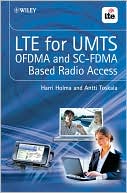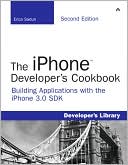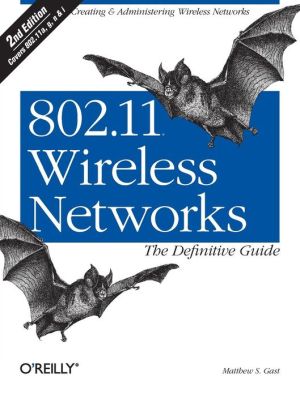LTE for UMTS - OFDMA and SC-FDMA Based Radio Access
Search in google:
From the editors of the highly successful WCDMA for UMTS, this new book gives a complete and up-to-date overview of Long Term Evolution (LTE) in a systematic and clear manner. It starts with an in-depth explanation of the background and standardization process before moving on to examine the system architecture evolution (SAE). The basics of air interface modulation choices are introduced and key subjects such as 3GPP LTE physical layer and protocol solutions are described. Mobility aspects and radio resource management together with radio and end-to-end performance are assessed. The voice solution and voice capacity in LTE are also illustrated. Finally, the main differences between LTE TDD and FDD modes are examined and HSPA evolution in 3GPP Releases 7 and 8 is described. LTE for UMTS is one of the first books to provide a comprehensive guide to the standards and technologies of LTE. Key features of the book include: Covers all the key aspects of LTE in a systematic manner Presents full description of 3GPP Release 8 LTE Examines the expected performance of LTE Written by experts actively involved in the 3GPP standards and product development.
Preface. Acknowledgements. List of Abbreviations. 1 Introduction (Harri Holma and Antti Toskala). 1.1 Mobile Voice Subscriber Growth. 1.2 Mobile Data Usage Growth. 1.3 Wireline Technologies Evolution. 1.4 Motivation and Targets for LTE. 1.5 Overview of LTE. 1.6 3GPP Family of Technologies. 1.7 Wireless Spectrum. 1.8 New Spectrum Identifi ed by WRC-07. 1.9 LTE-Advanced. 2 LTE Standardization (Antti Toskala). 2.1 Introduction. 2.2 Overview of 3GPP Releases and Process. 2.3 LTE Targets. 2.4 LTE Standardization Phases. 2.5 Evolution Beyond Release 8. 2.6 LTE-Advanced for IMT-Advanced. 2.7 LTE Specifications and 3GPP Structure. References. 3 System Architecture Based on 3GPP SAE (Atte Länsisalmi and Antti Toskala). 3.1 System Architecture Evolution in 3GPP. 3.2 Basic System Architecture Configuration with only E-UTRAN Access Network. 3.3 System Architecture with E-UTRAN and Legacy 3GPP Access Networks. 3.4 System Architecture with E-UTRAN and Non-3GPP Access Networks. 3.5 Inter-working with cdma2000® Access Networks. 3.6 IMS Architecture. 3.7 PCC and QoS. References. 4 Introduction to OFDMA and SC-FDMA and to MIMO in LTE (Antti Toskala and Timo Lunttila). 4.1 Introduction. 4.2 LTE Multiple Access Background. 4.3 OFDMA Basics. 4.4 SC-FDMA Basics. 4.5 MIMO Basics. 4.6 Summary. References. 5 Physical Layer (Antti Toskala, Timo Lunttila, Esa Tiirola, Kari Hooli and Juha Korhonen). 5.1 Introduction. 5.2 Transport Channels andTheir Mapping to the Physical Channels. 5.3 Modulation. 5.4 Uplink User Data Transmission. 5.5 Downlink User Data Transmission. 5.6 Uplink Physical Layer Signaling Transmission. 5.7 PRACH Structure. 5.8 Downlink Physical Layer Signaling Transmission. 5.9 Physical Layer Procedures. 5.10 UE Capability Classes and Supported Features. 5.11 Physical Layer Measurements. 5.12 Physical Layer Parameter Configuration. 5.13 Summary. References. 6 LTE Radio Protocols (Antti Toskala and Woonhee Hwang). 6.1 Introduction. 6.2 Protocol Architecture. 6.3 Medium Access Control. 6.4 Radio Link Control Layer. 6.5 Packet Data Convergence Protocol. 6.6 Radio Resource Control (RRC). 6.7 X2 Interface Protocols. 6.8 Early UE Handling in LTE. 6.9 Summary. References. 7 Mobility (Chris Callender, Harri Holma, Jarkko Koskela and Jussi Reunanen). 7.1 Introduction. 7.2 Mobility Management in Idle State. 7.3 Intra-LTE Handovers. 7.4 Inter-system Handovers. 7.5 Differences in E-UTRAN and UTRAN Mobility. 7.6 Summary. References 8 Radio Resource Management (Harri Holma, Troels Kolding, Daniela Laselva, Klaus Pedersen, Claudio Rosa and Ingo Viering). 8.1 Introduction. 8.2 Overview of RRM Algorithms. 8.3 Admission Control and QoS Parameters. 8.4 Downlink Dynamic Scheduling and Link Adaptation. 8.5 Uplink Dynamic Scheduling and Link Adaptation. 8.6 Interference Management and Power Settings. 8.7 Discontinuous Transmission and Reception (DTX/DRX). 8.8 RRC Connection Maintenance. 8.9 Summary. References 9 Performance (Harri Holma, Pasi Kinnunen, István Z. Kovács, Kari Pajukoski, Klaus Pedersen and Jussi Reunanen). 9.1 Introduction. 9.2 Layer 1 Peak Bit Rates. 9.3 Terminal Categories. 9.4 Link Level Performance. 9.5 Link Budgets. 9.6 Spectral Efficiency. 9.7 Latency. 9.8 LTE Refarming to GSM Spectrum. 9.9 Dimensioning. 9.10 Capacity Management Examples from HSPA Networks. 9.11 Summary. References. 10 Voice over IP (VoIP) (Harri Holma, Juha Kallio, Markku Kuusela, Petteri Lundén, Esa Malkamäki, Jussi Ojala and Haiming Wang). 10.1 Introduction. 10.2 VoIP Codecs. 10.3 VoIP Requirements. 10.4 Delay Budget. 10.5 Scheduling and Control Channels. 10.6 LTE Voice Capacity. 10.7 Voice Capacity Evolution. 10.8 Uplink Coverage. 10.9 Circuit Switched Fallback for LTE. 10.10 Single Radio Voice Call Continuity (SR-VCC). 10.11 Summary. References. 11 Performance Requirements (Andrea Ancora, Iwajlo Angelow, Dominique Brunel, Chris Callender, Harri Holma, Peter Muszynski, Earl McCune and Laurent Noël). 11.1 Introduction. 11.2 Frequency Bands and Channel Arrangements. 11.3 eNodeB RF Transmitter. 11.4 eNodeB RF Receiver. 11.5 eNodeB Demodulation Performance. 11.6 UE Design Principles and Challenges. 11.7 UE RF Transmitter. 11.8 UE RF Receiver Requirements. 11.9 UE Demodulation Performance. 11.10 Requirements for Radio Resource Management. 11.11 Summary. References. 12 LTE TDD Mode (Che Xiangguang, Troels Kolding, Peter Skov, Wang Haiming and Antti Toskala). 12.1 Introduction. 12.2 LTE TDD Fundamentals 12.3 TDD Control Design. 12.4 Semi-persistent Scheduling. 12.5 MIMO and Dedicated Reference Signals. 12.6 LTE TDD Performance. 12.7 Summary. References. 13 HSPA Evolution (Harri Holma, Karri Ranta-aho and Antti Toskala). 13.1 Introduction. 13.2 Discontinuous Transmission and Reception (DTX/DRX). 13.3 Circuit Switched Voice on HSPA. 13.4 Enhanced FACH and RACH. 13.5 Downlink MIMO and 64QAM. 13.6 Dual Carrier HSDPA. 13.7 Uplink 16QAM. 13.8 Layer 2 Optimization. 13.9 Single Frequency Network (SFN) MBMS. 13.10 Architecture Evolution. 13.11 Summary. References. Index.







